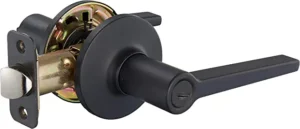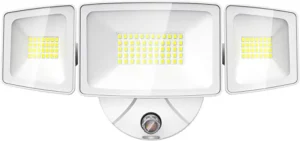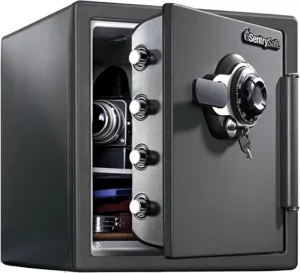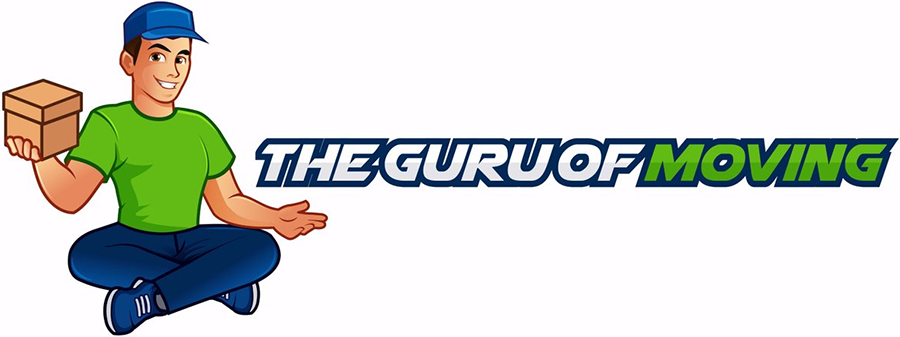Category: Packing Tips
Moving to San Francisco can be an exciting and daunting experience all at once. As one of the most vibrant and bustling cities in the world, San Francisco offers a unique lifestyle and a plethora of opportunities. However, with such a diverse culture, it is essential to know some important things before making your move. Here are a few key things you should know when moving to San Francisco.
Moving to San Francisco – 10 Things you should know before you move
High Cost of Living:
San Francisco is known for being one of the most expensive cities in the world. From housing to groceries, everything in San Francisco can be costly. Therefore, it is crucial to plan your budget well in advance and be prepared for high costs.
Transportation:
San Francisco has an efficient transportation system, including buses, subways, and cable cars. However, owning a car in San Francisco can be challenging due to high parking costs and limited space. Consider public transportation or ride-sharing services as a more convenient and affordable option.
Weather:
San Francisco has a temperate climate, which means it’s not too hot or too cold all year round. However, the city is known for its unpredictable weather patterns, so it’s always best to bring layers and be prepared for sudden changes.
Neighborhoods:
San Francisco has a diverse range of neighborhoods, each with its unique charm and culture. Before moving, research the different areas and determine which one is the best fit for your lifestyle and preferences.
Job Market:
San Francisco is home to some of the world’s biggest tech companies, making it a hub for tech-related jobs. However, competition for jobs can be fierce, so it’s essential to have a well-crafted resume and a strong network.
Diversity:
San Francisco is one of the most culturally diverse cities in the world. Embrace the unique cultures and traditions of the people you meet and be open to new experiences.
Outdoor Activities:
San Francisco is a city known for its scenic beauty and outdoor activities. From hiking trails to beaches, there is an abundance of opportunities to enjoy the great outdoors.
Homelessness:
Unfortunately, San Francisco is also known for its high homeless population. Be aware of your surroundings and take necessary precautions to ensure your safety.
Nightlife:
San Francisco is a city that never sleeps, and there are endless options for entertainment and nightlife. From bars and restaurants to concerts and shows, there’s always something to do.
Earthquakes:
San Francisco is located on a major fault line and has experienced several significant earthquakes in the past. Be prepared for potential earthquakes and ensure that your home is earthquake-proof.
Get free moving quotes from quality moving companies.
Moving can be a daunting task, and deciding on the right time to move can be just as challenging. It’s important to consider several factors before you decide on a moving date to ensure a smooth and successful move. In this blog post, we’ll explore the best time to move and the factors you should consider when choosing a moving date.
When is the best time to move: Factors to consider
Factor 1: Weather
The weather is an important factor to consider when choosing a moving date. Depending on where you live, extreme weather conditions like snow, rain, or heatwaves can make the move more challenging. It’s best to choose a moving date during a mild season to avoid any weather-related issues.
Factor 2: Availability of Moving Companies
Moving companies can get busy during peak moving seasons, making it challenging to book a reliable and affordable moving company. The best time to move is during the off-peak season, which is usually during the fall and winter months when fewer people are moving.
Factor 3: School Schedule
If you have children, their school schedule is an important consideration when choosing a moving date. Moving during the school year can disrupt their education, so it’s best to move during the summer break or holiday season when school is not in session.
Factor 4: Work Schedule
Your work schedule is another important factor to consider when choosing a moving date. If you’re working full-time, it’s best to choose a moving date that doesn’t interfere with your work schedule. You may need to take some time off work to prepare for the move, so plan accordingly.
Factor 5: Availability of Housing
If you’re moving to a new city or state, it’s important to consider the availability of housing. Research the housing market and choose a moving date that aligns with the availability of housing in your desired location. It’s also important to consider the lease agreement of your current home and ensure that you give proper notice to your landlord before moving out.
Factor 6: Personal Commitments
Lastly, personal commitments such as weddings, vacations, or family events are important considerations when choosing a moving date. You don’t want to miss out on important events or celebrations because of the move, so plan your moving date around your personal commitments.
Factor 7: Moving Costs
Moving costs can vary depending on the time of year. Summer is usually the peak moving season, and moving companies may charge more during this time. To save money on your move, consider moving during the off-peak season, when prices may be lower.
Factor 8: Personal Health and Safety
Moving can be physically demanding and can take a toll on your health. Consider your personal health and safety when choosing a moving date. If you have any health concerns or physical limitations, it’s best to choose a moving date that allows you to take the necessary precautions and avoid any potential health risks.
Factor 9: Distance and Logistics
The distance and logistics of your move are also important considerations. Moving long-distance or cross-country requires more planning and preparation, so you’ll need to choose a moving date that allows you enough time to make all the necessary arrangements.
Factor 10: Community Events
Community events such as festivals or parades can make moving challenging. These events can cause road closures, traffic jams, and other logistical issues that can affect your move. Be sure to check the local events calendar and choose a moving date that avoids any community events that may disrupt your move.
Get free moving quotes from quality moving companies.
- Change the Locks

The first thing you should do when you move into a new home is to change the locks. This is because you don’t know who may have a spare key to your new home, such as previous owners or real estate agents. Changing the locks will provide peace of mind and ensure that only you and your family have access to your home. Buy New Locks Here
- Install Security Cameras

Installing security cameras is a great way to deter potential burglars and keep an eye on your home when you’re away. There are many affordable security camera options on the market that can be easily installed by a professional or DIY. Check out our Best Video DoorBells without Subscription
- Install Smoke and Carbon Monoxide Detectors

Smoke and carbon monoxide detectors are essential for keeping your home and family safe. Make sure to install detectors in every bedroom and on every level of your home. Test them regularly to ensure they are working properly. Buy Smoke and Carbon Monoxide Detector Combo
- Be mindful of social media: Avoid posting updates on social media about your new home or your travel plans. This information can be used by burglars to plan a break-in.
- Secure Doors and Windows
Check all doors and windows to make sure they are secure. Consider adding extra locks or reinforcing the frames if needed. It’s also a good idea to install window sensors that will sound an alarm if someone tries to open them.
- Install Outdoor Lighting

Outdoor lighting is another effective way to deter potential burglars. Install motion-activated lights around your home’s perimeter and in areas that are particularly dark or secluded.
- Trim Landscaping
Overgrown trees and bushes can provide cover for burglars to hide behind. Trim back any overgrown landscaping that could provide cover or access to your home.
- Consider a safe:

If you have valuable items that you want to protect, consider installing a safe in your home. This can provide an extra layer of protection for important documents, jewelry, and other valuables.
- Be Cautious of Strangers
Be cautious of strangers who come to your door, especially those who claim to be from utility companies or service providers. Always ask for identification and contact the company to confirm their identity.
- Have an Emergency Plan
Lastly, have an emergency plan in place in case of a fire or break-in. Make sure everyone in your home knows the plan and practice it regularly. Check out Ready.gov/makeaplan
In conclusion, there are several ways to make your new home safe and secure. By following these top 10 tips, you can protect your home and your family from potential dangers and have peace of mind knowing that you’re doing everything you can to keep your home safe.
Get free moving quotes from quality moving companies.
Packing Tips
Moving can be a stressful and overwhelming experience, but there are some things you can do to make the transition easier. One of the best tips for a smooth move is to pack an “open first” box. This box contains all the essentials you’ll need immediately upon arrival at your new home, such as toiletries, snacks, and a change of clothes. Check our all our packing tips.
The “open first” box should be packed with the understanding that you may not have access to all of your belongings right away, so it’s important to include items that will make your first night in your new home more comfortable. Some other things you might consider including in your open first box are:
- Bedding: Pack a set of sheets, blankets, and pillows so you can make your bed as soon as you arrive.
- Basic kitchen supplies: A few plates, cups, and utensils will allow you to prepare a simple meal or snack without having to unpack all of your kitchenware.
- Electronics: If you can’t go without your morning coffee or tea, be sure to pack your coffee maker or electric kettle in your open first box.
- Medications: Make sure any essential medications are easily accessible and not buried in a box.
- Important documents: Birth certificates, passports, and other important documents should be kept in a separate folder or envelope that’s easy to access.
Remember to label your open first box clearly, so it’s easy to identify among all your other boxes. It’s also a good idea to keep this box with you during the move, rather than packing it onto the moving truck. This way, you’ll have easy access to all your essentials when you arrive at your new home.
In conclusion, packing an open first box is an essential step in making your move as stress-free as possible. By planning ahead and including all the essentials you’ll need right away, you can start settling into your new home with ease.
Get free moving quotes from quality moving companies.
How to load a tape gun
Listen it’s ok we have all been there, struggling and wondering how to load a tape gun so you can get them all important boxes taped. The good news is it is super easy when you know how. Below is a video showing you exactly how to load a tape gun video as well as a step by step guide on how to do it.
- First, grab your roll of tape, make sure that the end of the tape is on the left with the sticky side facing down.
- Next grab your roll of tape and push it fully onto the large roller
- Position the end of tape so that it ready to go under the other roller
- Grab the tape gun with your right hand and with your left hand pull the lever down and use your right index finger to hold it in place.
- Take the end of your tape and pull it underneath the roller and up towards the blades. Let go of the lever and use the blades to cut the tape.
And there you have it, you are now ready to tape your boxes. Check out our how to video on it below.
Learn how to tape moving boxes correctly
What you will need to tape moving boxes correctly
- Correct size moving box
- Correct type of Tape
Moving can be a stressful process, but knowing the right way to put a box together can make all the difference to your move and ensure that your items end up safely at your new home and not broken on the floor. You may not even know that you’ve have been taping moving boxes wrong all these years but by following our advice you will be taping moving boxes like the pros in no time.
Moving can be a stressful process, but knowing the right way to put a box together can make all the difference to your move and ensure that your items end up safely at your new home and not broken on the floor. You may not even know that you’ve have been taping moving boxes wrong all these years but by following our advice you will be taping moving boxes like the pros in no time.
Choose the correct size moving box.
As a general rule there 3 main sizes of boxes, small, medium and large. Small boxes are typically used for smaller heavier items such as books and canned food ect. Medium boxes are more used for items like plates, glasses and electronics. The larger boxes are typically used for large light items such as bedding, pillows and toys ect. Choosing the right size box for your items will mean that the items will arrive safe and that the boxes will be the correct weight and easier to move.
Correct type of tape
There are a number of different types of tapes you can use when taping moving boxes, duct tape, masking tape, shipping tape and filament tape. Having been in the moving industry for over 15 years we feel that your best option is shipping tape. It is cheap, easy to use, and strong enough to seal boxes. It is also water-resistant and very sticky. Having used shipping tape for over 15 years and never been let down by it we feel that this is the best tape option for taping moving boxes.
How to tape moving boxes
- Make sure the box is completely flat to start with.
- There are 2 flaps at the top of the box that are connected by a small piece of cardboard, these are used for the flap lock feature. Fold the 2 sides that have the flaps down so that they are against the box.
- Next, open the box up so that it is square, the 2 flap sides should have stayed attached to the box, the part where the flaps are folded over is going to be the top of your box.
- Next flip the box upside down, we are now ready to tape the bottom of the box.
- First fold in the 2 small flaps, then fold in the 2 longer flaps.
- Run a piece of tape along the opening of the 2 long flaps, ensure that there is at least 3 inches of tape going up the side of the box.
- Repeat this process twice but make sure to put the next 2 pieces of tape an inch either side of the first piece. This will help to improve the strength of the tape.
- Flip your box back over and [ack up to the top of the folded flaps.
- Finally break apart the flaps that were being held by the small pieces of cardboard and repeat the taping process we used for the bottom of the box. Label it correctly and you’re done.
Get free moving quotes from quality moving companies.
Always stack dishes upwards when packing, and avoid breakage by using custom-designed boxes. It’s also a good idea to avoid wrapping china in newsprint; the ink can stain your dishes. If you are not quite sure how to do it, check out this great video on how to pack dishes.
This one tip alone will not only help to save you time but it may also save your sanity. Simply take pictures of the back of your electronics before you disconnect them and then when you go to connect all the wires at your new home you simply have to look at each picture.
Filling the box completely will to ensure that the items inside stay safer as they will be unable to move around. Having the boxes filled to the top also means that your box will not crush when it is loaded onto the truck.
This will help to ensure that your mover places all the boxes in the correct rooms which will save you time and money and also mean you won’t have to move wayward boxes up and down stairs when they leave.
This may sound obvious but we have seen so many people make the mistake of not doing this properly. Our advice is to put 3 strips of tape on the top and bottom of the box. Do not fold the flaps of the box, always tape them.
If you are in doubt you can always follow our video on How To Tape Moving Boxes Correctly
